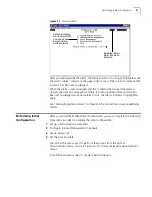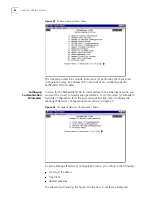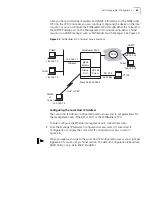
4
P
ATH
B
UILDER
S700 M
ODULE
AND
A
PPLICATION
O
VERVIEW
This chapter provides a brief overview of ATM (Asynchronous Transfer Mode)
technology, describes the features and operation of each of the PathBuilder
S700
WAN access switch (PathBuilder S700) modules, and discusses applications
supported by the PathBuilder S700. It contains the following sections:
n
ATM Overview
n
System Module Overview
n
ATM Module Overview
n
Application Module Overview
n
Supported Applications
For specifications for the PathBuilder S700 modules, see “Specifications” in
Chapter 1.
ATM Overview
ATM provides the means of simultaneously transferring a wide variety of services
with different protocols and bandwidth requirements such as voice, packet data,
and video between end users or user networks. It does so by segmenting the input
data streams into 53-byte cells, assigning the cells to virtual circuits set up in the
ATM network, multiplexing the cells for transmission according to the bandwidth
requirements of the individual data streams, and reassembling the cells into the
original data streams at the receiving end.
For more detail about how to apply the PathBuilder S700 to provide ATM WAN
access, see “Supported Applications” in Chapter 4.
Virtual Circuits
ATM networks are organized into virtual circuits or logical duplex paths between
two ATM unit ports.
Each transmission direction in a virtual circuit is referred to as a virtual channel.
Virtual channels are then grouped into virtual paths between two ports. The
channels and paths are assigned numbers: VPIs (Virtual Path Indicators) and VCIs
(Virtual Channel Indicators). Figure 46 illustrates this scheme.
Summary of Contents for 3C63400-3AC-C - PathBuilder S700 Switch
Page 14: ...xiv CHAPTER SUPPLEMENTARY REGULATORY INFORMATION ...
Page 18: ...4 ABOUT THIS GUIDE ...
Page 28: ...14 CHAPTER 1 SYSTEM DESCRIPTION ...
Page 88: ...74 CHAPTER 3 GETTING STARTED ...
Page 260: ...246 CHAPTER 6 PATHBUILDER S700 DIAGNOSTICS AND PERFORMANCE MONITORING ...
Page 270: ...256 INDEX ...
















































